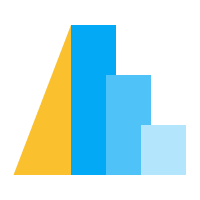Scale & Guide Resolution#
When creating compound charts (see Layered & Multi-View Charts), altair defaults
to using shared chart scales and guides (e.g. axes, legends, etc.).
This default can be adjusted using the Chart.resolve_scale(),
Chart.resolve_axis(), and Chart.resolve_legend() functions.
For example, suppose you would like to concatenate two charts with separate color scales; the default behavior is for the color scale to be created for a union of the two color encoding domains:
import altair as alt
from altair.datasets import data
source = data.cars()
base = alt.Chart(source).mark_point().encode(
x='Horsepower:Q',
y='Miles_per_Gallon:Q'
).properties(
width=200,
height=200
)
alt.concat(
base.encode(color='Origin:N'),
base.encode(color='Cylinders:O')
)
This default can be changed by setting the scale resolution for the color to
"independent" (rather than the default, "shared"):
alt.concat(
base.encode(color='Origin:N'),
base.encode(color='Cylinders:O')
).resolve_scale(
color='independent'
)
Dual Y Axis#
A common technique for combining chart containing different measures is using a dual y axis. There are two strategies to achieve this result using altair. The first is to manually specify the mark color and associated axis title color of each layer.
import altair as alt
from altair.datasets import data
source = data.cars()
base = alt.Chart(source).encode(x='year(Year):T')
line_A = base.mark_line(color='#5276A7').encode(
alt.Y('average(Horsepower):Q').axis(titleColor='#5276A7')
)
line_B = base.mark_line(color='#F18727').encode(
alt.Y('average(Miles_per_Gallon):Q').axis(titleColor='#F18727')
)
alt.layer(line_A, line_B).resolve_scale(y='independent')
In this case the axis colors act as a pseudo-legend. Alternatively if you want a legend the Filter and Fold must be applied. Legends are only created in Vega-Lite to represent an encoding.
base = alt.Chart(source).mark_line().transform_fold(
['Horsepower', 'Miles_per_Gallon'],
as_=['Measure', 'Value']
).encode(
alt.Color('Measure:N'),
alt.X('year(Year):T')
)
line_A = base.transform_filter(
alt.datum.Measure == 'Horsepower'
).encode(
alt.Y('average(Value):Q').title('Horsepower')
)
line_B = base.transform_filter(
alt.datum.Measure == 'Miles_per_Gallon'
).encode(
alt.Y('average(Value):Q').title('Miles_per_Gallon')
)
alt.layer(line_A, line_B).resolve_scale(y='independent')
Note that dual axis charts might be misleading about relationships in your data. For further reading on the topic see The case against dual axis charts by Lisa Charlotte Rost.
